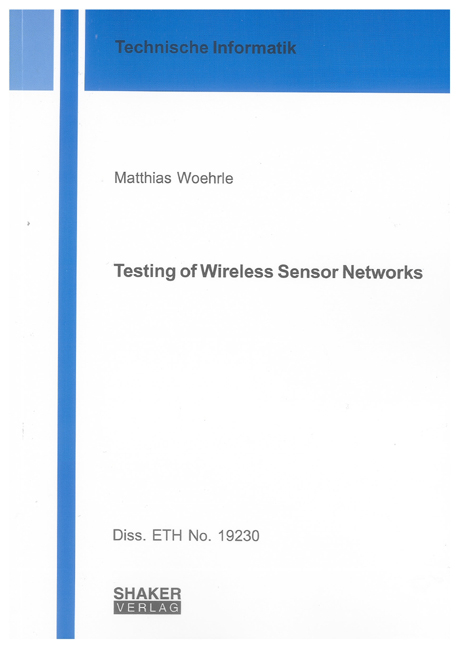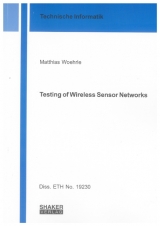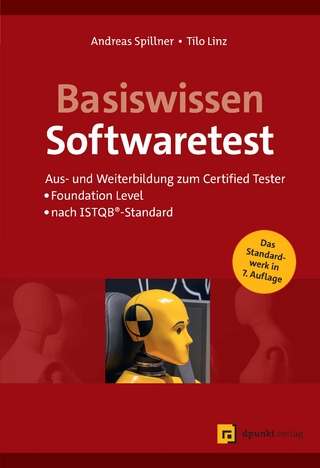Testing of Wireless Sensor Networks
Seiten
2010
|
1., Aufl.
Shaker (Verlag)
978-3-8322-9479-3 (ISBN)
Shaker (Verlag)
978-3-8322-9479-3 (ISBN)
- Keine Verlagsinformationen verfügbar
- Artikel merken
A Wireless Sensor Network (WSN) is an embedded computation system for distributed sensing of a dispersed phenomenon. It is a distributed system built of autonomous, yet cooperating embedded devices, so-called sensor nodes. Each sensor node provides computational, communication and storage resources and typically operates on limited energy resources. WSNs are often deployed in remote locations for long-term unattended operation. Hence, the validation of correct functioning of the system before the actual installation is of utmost importance.
Validation of WSNs is typically focused on system testing, i.e., analyzing system executions including software and sensor node hardware. System testing of WSNs is a complex task. WSNs are distributed systems and have a high degree of concurrency, resulting in a very large state space. The internal state of the sensor nodes is hidden rendering analysis of executions intricate. System testing needs to consider that the operation of a WSN is highly dependent on the environment. As a prominent example, wireless communication depends on environmental conditions, is changing over time and hence unreliable.
This thesis contributes several solutions for testing WSNs. Its goal is to provide automated tool support for executing testcases, extracting meaningful information from test executions, analyzing the monitored information, and checking for the conformance to a specification of expected behavior. To this end, the first part of the thesis focuses on testing functional properties of a WSN. It describes a framework to execute the same test on different test platforms such as simulators and testbeds. Furthermore, an analysis framework is presented that allows a tester to extract behavioral information from test execution logs. A corresponding programming language was developed that simplifies common analysis tasks such as determining the routing paths of a network protocol. The second part of the thesis focuses on testing non-functional properties, in particular power consumption. It presents a test architecture that enables a tester to extract and monitor such properties. Moreover, it describes a formal conformance test for measurements of power consumption and details on its formal foundations. It discusses various optimizations to make the conformance test relevant for practical application and demonstrates its efficiency by a comparison with a state-of-the-art online testing tool.
Validation of WSNs is typically focused on system testing, i.e., analyzing system executions including software and sensor node hardware. System testing of WSNs is a complex task. WSNs are distributed systems and have a high degree of concurrency, resulting in a very large state space. The internal state of the sensor nodes is hidden rendering analysis of executions intricate. System testing needs to consider that the operation of a WSN is highly dependent on the environment. As a prominent example, wireless communication depends on environmental conditions, is changing over time and hence unreliable.
This thesis contributes several solutions for testing WSNs. Its goal is to provide automated tool support for executing testcases, extracting meaningful information from test executions, analyzing the monitored information, and checking for the conformance to a specification of expected behavior. To this end, the first part of the thesis focuses on testing functional properties of a WSN. It describes a framework to execute the same test on different test platforms such as simulators and testbeds. Furthermore, an analysis framework is presented that allows a tester to extract behavioral information from test execution logs. A corresponding programming language was developed that simplifies common analysis tasks such as determining the routing paths of a network protocol. The second part of the thesis focuses on testing non-functional properties, in particular power consumption. It presents a test architecture that enables a tester to extract and monitor such properties. Moreover, it describes a formal conformance test for measurements of power consumption and details on its formal foundations. It discusses various optimizations to make the conformance test relevant for practical application and demonstrates its efficiency by a comparison with a state-of-the-art online testing tool.
| Erscheint lt. Verlag | 18.10.2010 |
|---|---|
| Reihe/Serie | Technische Informatik |
| Sprache | englisch |
| Maße | 148 x 210 mm |
| Gewicht | 239 g |
| Einbandart | Paperback |
| Themenwelt | Informatik ► Software Entwicklung ► Qualität / Testen |
| Mathematik / Informatik ► Informatik ► Theorie / Studium | |
| Schlagworte | conformance testing • Networked Embedded Systems • power consumption • Testing • wireless sensor networks |
| ISBN-10 | 3-8322-9479-1 / 3832294791 |
| ISBN-13 | 978-3-8322-9479-3 / 9783832294793 |
| Zustand | Neuware |
| Informationen gemäß Produktsicherheitsverordnung (GPSR) | |
| Haben Sie eine Frage zum Produkt? |
Mehr entdecken
aus dem Bereich
aus dem Bereich
Aus- und Weiterbildung zum Certified Tester – Foundation Level nach …
Buch | Hardcover (2024)
dpunkt (Verlag)
39,90 €
Die Softwaretest-Normen verstehen und anwenden
Buch | Hardcover (2024)
dpunkt (Verlag)
44,90 €
Qualität von und mit KI-basierten Systemen
Buch | Hardcover (2023)
dpunkt (Verlag)
34,90 €




